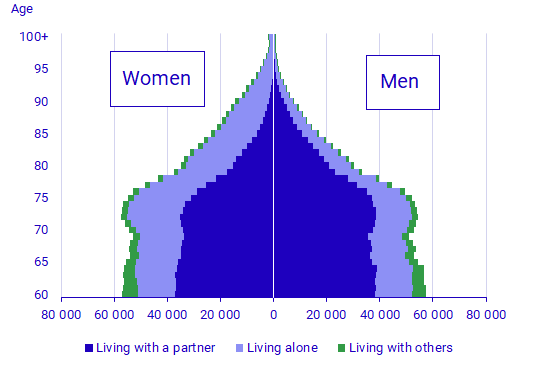Demographic analyis: After age 60. A description of elderly people in Sweden
Elderly people – not a homogeneous group
Statistical news from Statistics Sweden 2022-02-10 8.00
2,6 million people, or one-fourth of the Swedish population, are 60 years or older. It is an age group that has increased in size more than the increase of the total population in recent years. But elderly people are not a homogenous group. There are significant differences between various groups of elderly people, for example in terms of living arrangement, health, income and voter participation.
In a report, Statistics Sweden describes the elderly population in Sweden. Elderly people are defined as those who are 60 years and older. The aim of the report is to give a broad description of the current situation of elderly people. This population is described in socio-demographic terms, such as living arrangements, longevity and health, gainful employment and income, changes in accommodation and cohabitation relationship in recent years and participation in civil society.
Many are living with a partner – but not among the oldest
It is most common to live together with a partner. This applies to 60 percent of those 60 years and older. Nearly 35 percent are living alone and just over 5 percent neither live alone nor with a partner. This latter group could be living in a collective household, with children or share the household with an indwelling person.

Living with a partner is more common in younger than older elderly and more common among men than among women. This is connected to the fact that the life expectancy of women is longer than men’s and that the man is often older than the woman in a relationship. Accordingly, there are more women than men living without a partner in the older ages.
Definitions and explanations
The statistics in the report are mainly based on various national administrative registries and the Survey of living conditions (ULF/SILC).
Publication
Feel free to use the facts from this statistical news but remember to state Source: Statistics Sweden.
